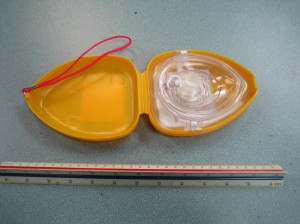Participants enrolled in standard first aid courses will learn to recognize and provide care for patients suffering from environmental conditions. Participants will learn to provide care for victims of heat stress. The normal human body’s temperature ranges from 36 to 38 degrees celsius. When the body’s temperature rises above that normal range the body will react to get rid of the excess heat. If the body can not cool itself faster than the rise in heat the body will experience heat stress which can result in heat disorders, heat cramps, and heat exhaustion. This page will outline the sources of heat stress, removal of heat from the body, body factors that increase the chances of heat stress, and how to recognize and treat heat stress.
Sources of Heat Stress:
Many variables exist that contribute to heat stress. This page will focus on the major sources. The environment is a major contributor as air temperature, airflow, humidity and radiant heat all have a strong influence on causing heat stress. Workload and work rate contribute significantly to increased levels of heat. Finally the worker’s condition as to whether he or she is acclimatized, hydrated, properly clothed, or on any
medication can be a contributing factor to heat stress.
The body can gain heat either through work activity or through the environment. The heat from an activity depends on the workload and heat from the environment depends on the temperature, direct sunlight, and humidity levels. Heat can also come from other radiant sources such as fire or asphalt.
Removing Heat from the body:

The body has several methods of removing heat to prevent heat disorders such as heat exhaustion from taking effect. The body has the ability to increase blood flow which brings excess body heat to the surface of the body (skin) to transfer it to the surrounding air. It is a simple process of heat exchange by convection. This is an effective technique especially if the patient is in a shaded environment. Sweating is an extremely effective method of reducing body heat. When the body gets hot a signal is sent from the brain to excrete sweat. Latent heat of evaporation, the amount of heat required to evaporate water, is extremely high which makes sweating an effective form of reducing heat. Proper fluid intake and medications can affect the body’s ability to excrete sweat. Environments that have high humidity reduce the effectiveness of sweating as the air is already near-saturated with water making it difficult for any more water to evaporate.
Risk Factors that increase Heat Stress:
Several personal factors increase the chances of heat stress and cause people to respond to heat differently. Lack of acclimatization is a variable in which the body is not conditioned to hot environments. People who lack acclimatization are at a higher risk of developing a heart disorder like heat cramps. People with poor physical fitness also decrease the chances of coping with heat stress. Obesity, increased age, medication, medical conditions, alcohol, drug use, and previous heat strokes all increase the chances of a person having a heart disorder.
To learn to recognize and provide care for patients with heat cramps, heat exhaustion or heat stroke select the disorder of your choice from the main or side menu.
